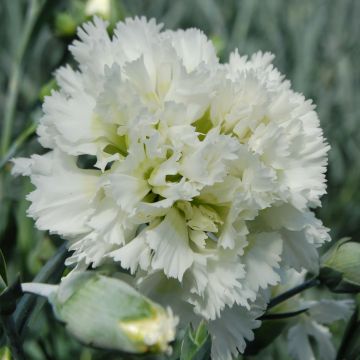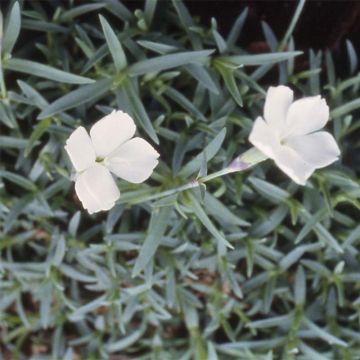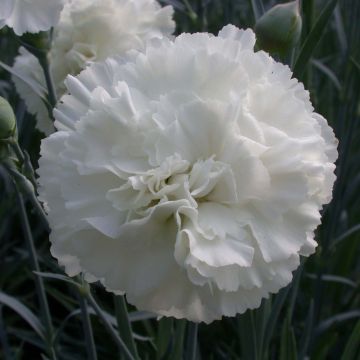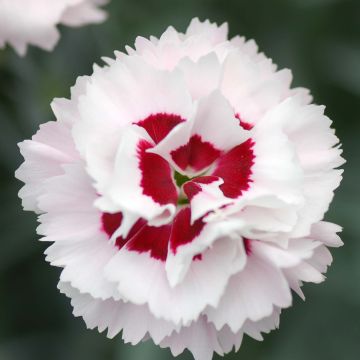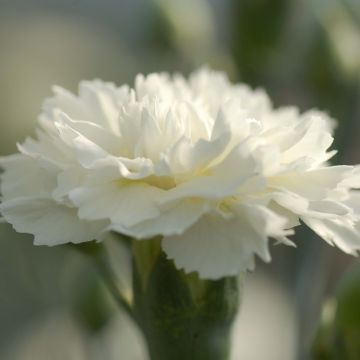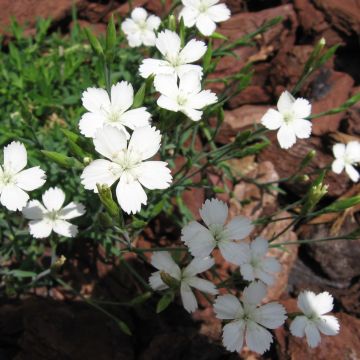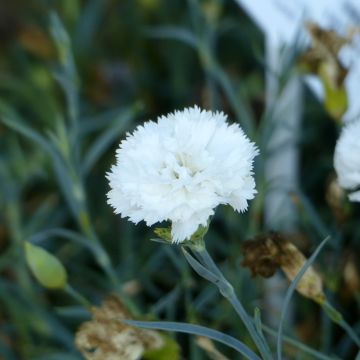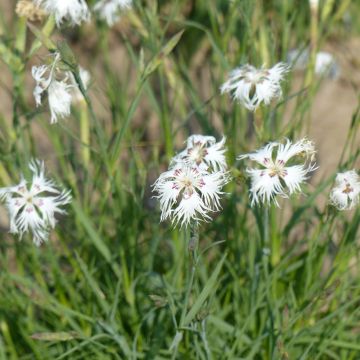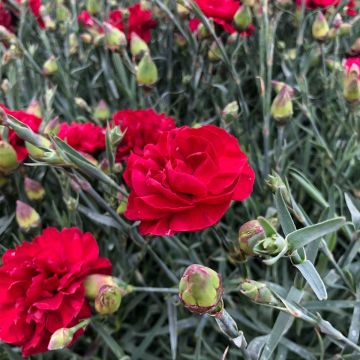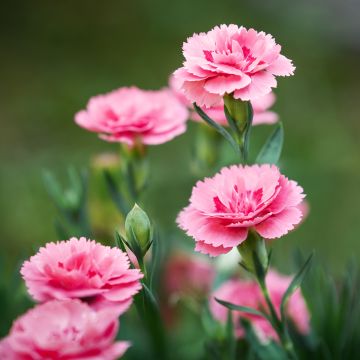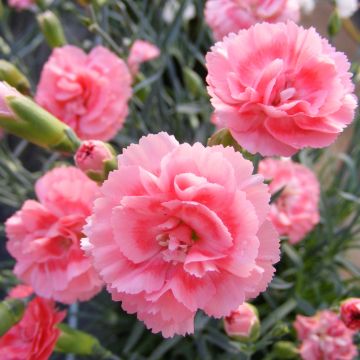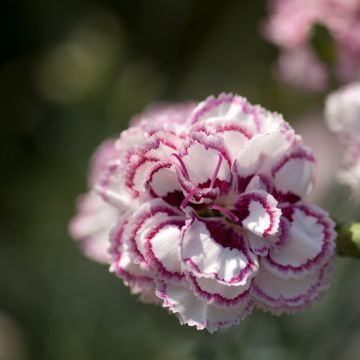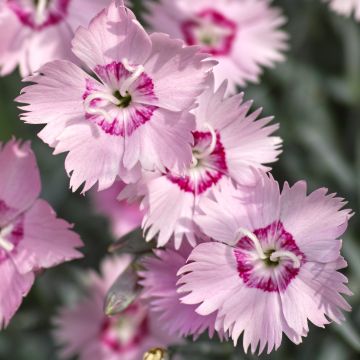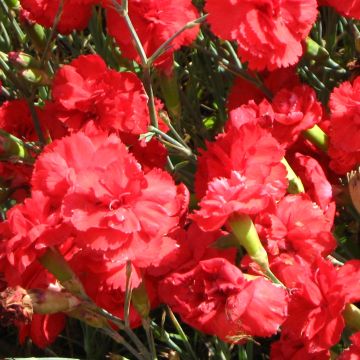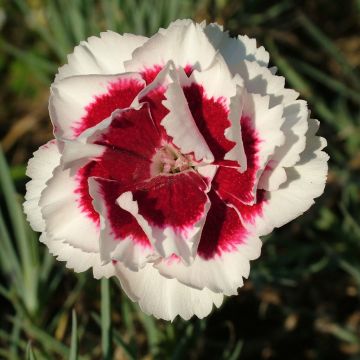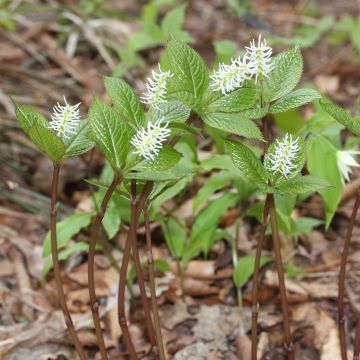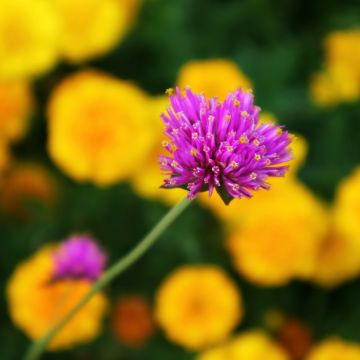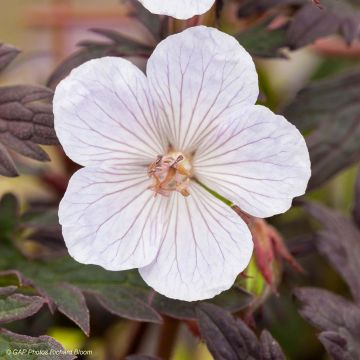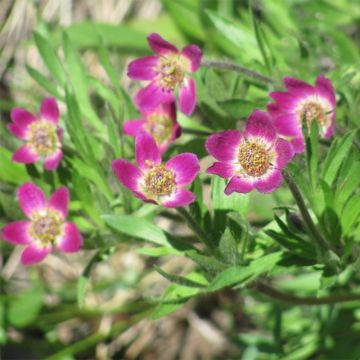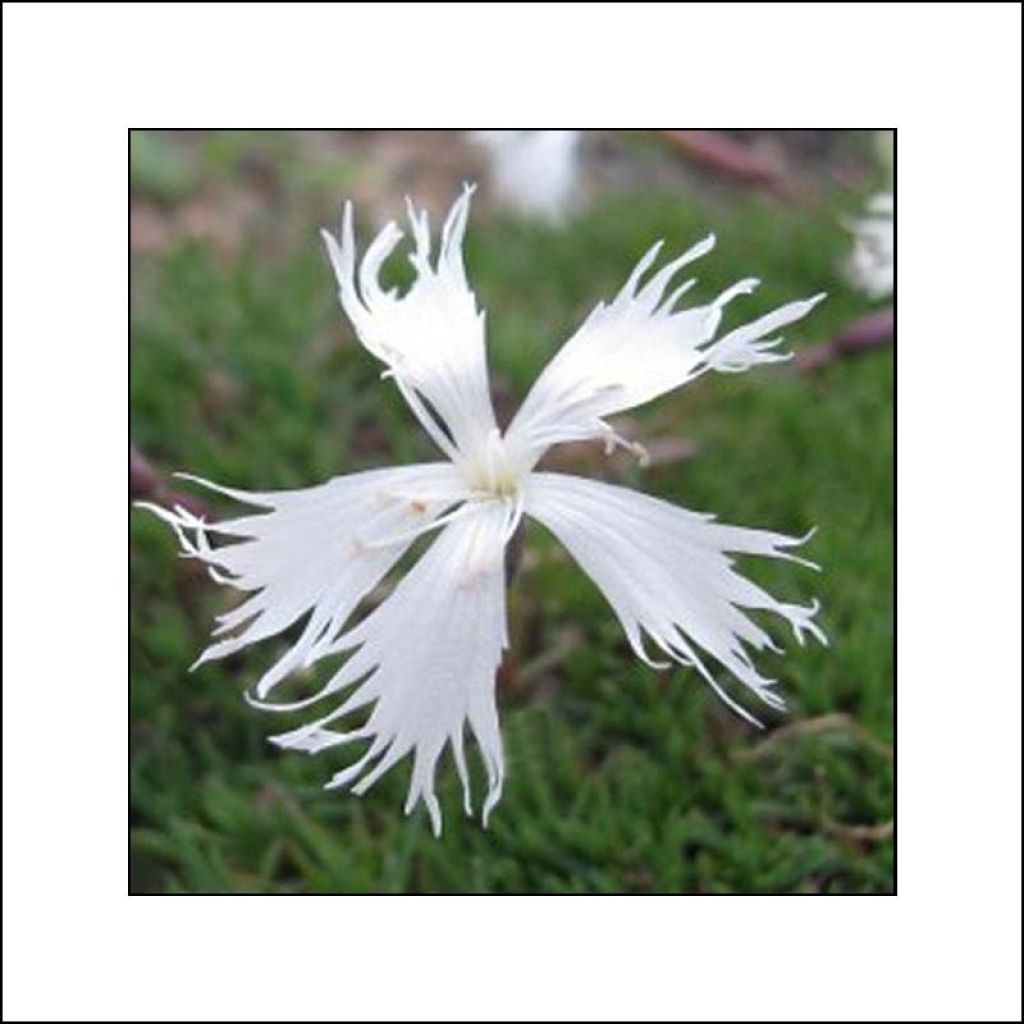

Dianthus squarrosa Berlin Snow
Dianthus squarrosa Berlin Snow
Dianthus x squarrosa Berlin Snow
Pink
The product does not match the photo.
Martine, 14/05/2020
Why not try an alternative variety in stock?
View all →This plant carries a 12 months recovery warranty
More information
We guarantee the quality of our plants for a full growing cycle, and will replace at our expense any plant that fails to recover under normal climatic and planting conditions.
From €5.90 for pickup delivery and €6.90 for home delivery
Express home delivery from €8.90.
Does this plant fit my garden?
Set up your Plantfit profile →
Description
Dianthus 'Berlin Snow' is a low hybrid carnation variety with spring flowering. It was created by plant enthusiasts in the former Democratic Republic of Germany (RDA). It is a hardy and undemanding small plant, which grows in a neat tuft of evergreen leaves of a grey-green-blue colour. It comes to life in spring with small intensely fringed pure white star-shaped flowers. This lively little perennial grows easily in full sun, in well-drained, even rocky and poor soils. Plant it in a rock garden, an alpine trough, or a sunny border.
Dianthus 'Berlin Snow' belongs to the Caryophyllaceae family. While the origins of this hybrid are uncertain, some carnation specialists see its relationship with D. squarrosus 'Nana', to which it bears a strong resemblance, and D. spicifolius. The former is native to the rocky steppes of northern Europe, Russia and Ukraine, while its presumed second parent is a plant from the rocky areas of western Asia (Carpathians, Ukraine). 'Berlin Snow' is resistant to cold, snow, and dry soils.
'Berlin Snow' grows into a remarkably dense and low cushion. Its adult size will not exceed 10 to 15cm (4 to 6in) in height when in flower (5cm (2in) for the foliage) with a spread of 20 to 30cm (8 to 12in). Unlike many carnations, it blooms in spring and not in summer, usually in May-June depending on the climate. Small delicate solitary flowers with 5 white petals fringed at the edges open on slender and short stems. The evergreen foliage consists of thin, linear, glabrous, leathery leaves, with a colour that is a mix of dark green and grey-blue.
While primarily an alpine rock plant, 'Berlin Snow' is robust and tolerant enough to find many uses in the garden. It thrives in all rocky areas abandoned by other plants: a dry rockery, a difficult embankment, or along a path. Plant it with other small undemanding perennials that will not suffocate it, such as small sedums, thymes, helianthemums, silenes, Armeria, Phlox subulata, Delosperma cooperi, or Geranium sanguineum. This plant looks pretty between the stones of a wall or paving, or in a container. It adapts very well to pot culture, in light soil, but will require slightly more frequent watering and some fertiliser during the season to remain floriferous.
Report an error about the product description
Dianthus squarrosa Berlin Snow in pictures
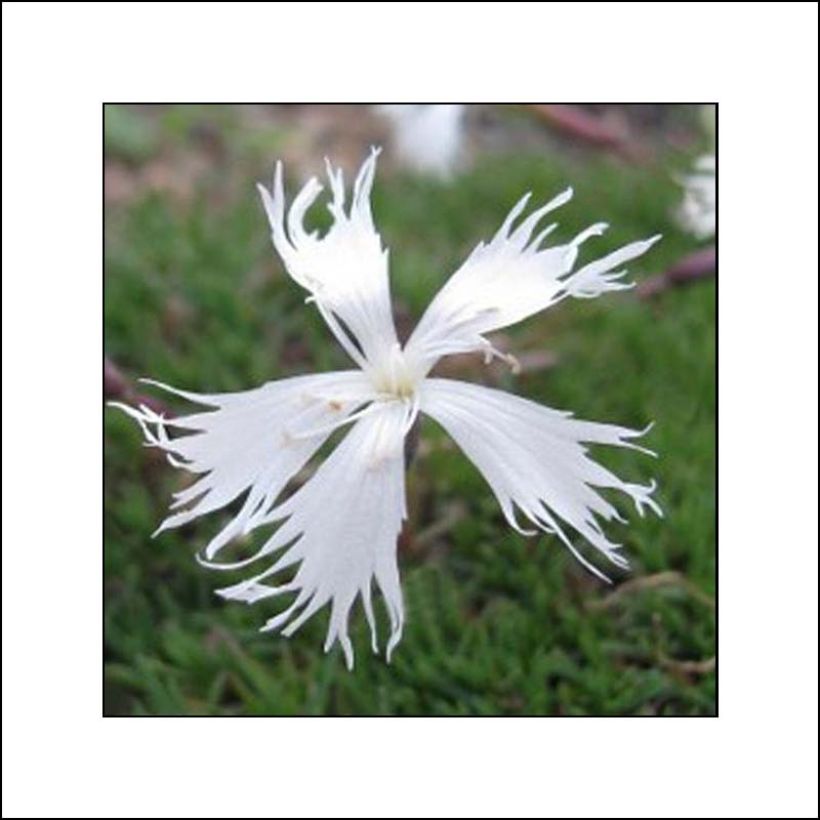

Flowering
Foliage
Plant habit
Botanical data
Dianthus
x squarrosa
Berlin Snow
Caryophyllaceae
Pink
Cultivar or hybrid
Other Dianthus - Pinks
Planting and care
Plant Dianthus 'Berlin Snow' in ordinary, but well-drained soil. It is an undemanding plant that adapts to a wide range of soils, but prefers permeable and rocky soils that are dry to moist, without excessive humidity. It does not like limestone. Gravel-rich soil produces good results. In open ground, this young plant is very hardy, resistant beyond -15°C (5°F). It prefers a very sunny exposure. Lightly cut back the clump after summer flowering to promote a possible second flowering during summer. In rich soil, shorten some of the foliage with shears after flowering to maintain a dense habit. It will be useful to apply a balanced fertiliser to poor soil in March. Divide the clumps every 3 years to rejuvenate those whose base is thinning out. Alternatively, propagate through layering or by taking cuttings. Growing in pots will require more regular watering and some flower fertiliser in spring.
Planting period
Intended location
Care
-
, onOrder confirmed
Reply from on Promesse de fleurs
Spring flowering perennials
Haven't found what you were looking for?
Hardiness is the lowest winter temperature a plant can endure without suffering serious damage or even dying. However, hardiness is affected by location (a sheltered area, such as a patio), protection (winter cover) and soil type (hardiness is improved by well-drained soil).

Photo Sharing Terms & Conditions
In order to encourage gardeners to interact and share their experiences, Promesse de fleurs offers various media enabling content to be uploaded onto its Site - in particular via the ‘Photo sharing’ module.
The User agrees to refrain from:
- Posting any content that is illegal, prejudicial, insulting, racist, inciteful to hatred, revisionist, contrary to public decency, that infringes on privacy or on the privacy rights of third parties, in particular the publicity rights of persons and goods, intellectual property rights, or the right to privacy.
- Submitting content on behalf of a third party;
- Impersonate the identity of a third party and/or publish any personal information about a third party;
In general, the User undertakes to refrain from any unethical behaviour.
All Content (in particular text, comments, files, images, photos, videos, creative works, etc.), which may be subject to property or intellectual property rights, image or other private rights, shall remain the property of the User, subject to the limited rights granted by the terms of the licence granted by Promesse de fleurs as stated below. Users are at liberty to publish or not to publish such Content on the Site, notably via the ‘Photo Sharing’ facility, and accept that this Content shall be made public and freely accessible, notably on the Internet.
Users further acknowledge, undertake to have ,and guarantee that they hold all necessary rights and permissions to publish such material on the Site, in particular with regard to the legislation in force pertaining to any privacy, property, intellectual property, image, or contractual rights, or rights of any other nature. By publishing such Content on the Site, Users acknowledge accepting full liability as publishers of the Content within the meaning of the law, and grant Promesse de fleurs, free of charge, an inclusive, worldwide licence for the said Content for the entire duration of its publication, including all reproduction, representation, up/downloading, displaying, performing, transmission, and storage rights.
Users also grant permission for their name to be linked to the Content and accept that this link may not always be made available.
By engaging in posting material, Users consent to their Content becoming automatically accessible on the Internet, in particular on other sites and/or blogs and/or web pages of the Promesse de fleurs site, including in particular social pages and the Promesse de fleurs catalogue.
Users may secure the removal of entrusted content free of charge by issuing a simple request via our contact form.
The flowering period indicated on our website applies to countries and regions located in USDA zone 8 (France, the United Kingdom, Ireland, the Netherlands, etc.)
It will vary according to where you live:
- In zones 9 to 10 (Italy, Spain, Greece, etc.), flowering will occur about 2 to 4 weeks earlier.
- In zones 6 to 7 (Germany, Poland, Slovenia, and lower mountainous regions), flowering will be delayed by 2 to 3 weeks.
- In zone 5 (Central Europe, Scandinavia), blooming will be delayed by 3 to 5 weeks.
In temperate climates, pruning of spring-flowering shrubs (forsythia, spireas, etc.) should be done just after flowering.
Pruning of summer-flowering shrubs (Indian Lilac, Perovskia, etc.) can be done in winter or spring.
In cold regions as well as with frost-sensitive plants, avoid pruning too early when severe frosts may still occur.
The planting period indicated on our website applies to countries and regions located in USDA zone 8 (France, United Kingdom, Ireland, Netherlands).
It will vary according to where you live:
- In Mediterranean zones (Marseille, Madrid, Milan, etc.), autumn and winter are the best planting periods.
- In continental zones (Strasbourg, Munich, Vienna, etc.), delay planting by 2 to 3 weeks in spring and bring it forward by 2 to 4 weeks in autumn.
- In mountainous regions (the Alps, Pyrenees, Carpathians, etc.), it is best to plant in late spring (May-June) or late summer (August-September).
The harvesting period indicated on our website applies to countries and regions in USDA zone 8 (France, England, Ireland, the Netherlands).
In colder areas (Scandinavia, Poland, Austria...) fruit and vegetable harvests are likely to be delayed by 3-4 weeks.
In warmer areas (Italy, Spain, Greece, etc.), harvesting will probably take place earlier, depending on weather conditions.
The sowing periods indicated on our website apply to countries and regions within USDA Zone 8 (France, UK, Ireland, Netherlands).
In colder areas (Scandinavia, Poland, Austria...), delay any outdoor sowing by 3-4 weeks, or sow under glass.
In warmer climes (Italy, Spain, Greece, etc.), bring outdoor sowing forward by a few weeks.


































